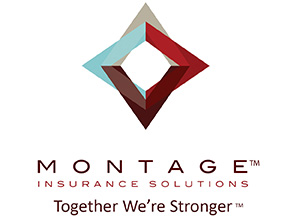As Featured in CSQ Philanthropy
Risk surrounds us everywhere—as we drive, at home, at work, purchasing assets, during disability, turning sixty-five, saving in banks, taking a loan, taking or losing a job—in almost anything we do (even in our death!) we are insured. We are covered by multiple policies meant for peace of mind; many of the policies we purchase, others are purchased by banks, and others still are funded by our employers. They are meant for peace of mind; however, the question we need to ask is whether cost is outweighing the peace.
Often times these days, we as individuals, couples or employers look at our finances hoping to fit everything into our budget, and these multiple insurance plans simply scream at us. We are seeing this money leave our budget, and what we see in return is not a fixed asset, yet increasing cost to cover the “what if”, which makes the importance of tough pricing negotiations more valuable than ever. After 20 years as an insurance broker, I have just about seen it all at this point, and what I can tell you is that ensuring your employees, their families and your business have proper coverage is one of the most important things a broker does—from benefits and workers compensation, to professional liability and property/casualty coverages—you need to have the right policies in place. The issue is that finding a broker who correctly suits you is a different challenge than it used to be with the ACA and large acquisitions cutting the number of Brokerage firms in half over the last 5 years. However, this task is paramount, because partnering with the right brokerage firm directly correlates to your bottom line and added value for dollars spent.
The Committee for a Responsible Federal Budget (CRFB) is an independent, non-profit and they have estimated that a full repeal of the ACA would result in a $1.55 trillion savings. As Joint Committee on Taxation explains, “they do their best to measure the macroeconomic effects—the effects a policy will have on the overall growth of the economy, these estimates always take into account the likely behavioral responses from taxpayers to proposed changes in tax law … [including] shifts in the timing of transactions and income recognition, shifts between business sectors and entity form, shifts in portfolio holdings, shifts in consumption, and tax planning and avoidance.” The CRFB goes on to layout other costs from repealing ACA, with the tax portion provisions costing $800 billion. Overall, in the estimated $1.55 trillion in savings, they state $900 billion comes from repealing insurance, cost-sharing subsidies and $1.1 trillion from the Medicaid expansion.
Having said that, repealing the ACA is no easy task—and the idea of developing a “detailed plan” within such a short time is unnerving to some of us in the industry. We are tired of politicians, fees, fines and having to tell our employees their co-share, copays and deductibles are increasing. The billions in unspoken costs from carriers, brokers and employers attempting to comply with all the changes, are the ones that cause a merry-go-round impact of lost dollars. Broker-partners will assist employers as they navigate through upcoming changes. Employers who have always offered employee benefits may see more competition, per Trump’s proposal (or so he says). In California, our established HMO networks may create a barrier to entry for insurers in other states, if the state lines are erased, as Trump mentions selling insurance across state lines as one of his goals. With only three California carriers (AETNA, CIGNA and United HealthCare) selling on a national platform, this may take time as the “Blues” strategize to catch up. With Anthem’s purchase of CIGNA falling by the wayside, certainly they are working on their plan B.
Employers who did not offer coverage before ACA may be pressured to continue to subsidize healthcare or lose employees—especially if the safety net of Medicaid changes too drastically. Since its expansion in 2014, Medicaid has covered most adults with incomes at or below 138% of the poverty level. Under the ACA, 32 states expanded Medicaid to include adults who qualified. Undocumented immigrants are ineligible for Medicaid or Marketplace coverage. Those who are lawfully present immigrants may be eligible for Medicaid if they qualify, per their state’s income rules. A five-year waiting period applies to lawfully eligible immigrants and pregnant women, making them ineligible for Medicaid until this is satisfied. However, they may apply for subsidy. If they have an income below 100% of the Federal Poverty Limit, for the purposes of tax credits, they may pay no more than 2.4% of income for a silver plan in 2017.
Many people still do not have access to coverage through their job, or their employer coverage is considered unaffordable (requiring an employee contribution of more than 9.69% of their household income for the employee coverage—not including the cost of the family), possibly qualifying them for subsidy. There are two types of subsidies: the first is called premium tax credit (reducing monthly costs for healthcare), and the second is financial assistance (cost-sharing designed to reduce out of pocket costs). The GOP legislation does include mechanisms for saving qualifying individuals some of the cost of insurance as well. Recently released drafts of the proposal base this on a mix of age and income.
In 2015, the survey from the National Center for Health Statistics showed 28.4 million Americans under 65 were uninsured. According to 2015 Gallup-Heathway’s well-being index, 17.1% of national adults were uninsured which was reduced to 11% in the first quarter of 2016, showing a net change of 6.1%.
With the release of the GOP draft wording, some sigh relief that those with preexisting conditions still appear to be guaranteed a policy —the proposal also mentioned tax credits, higher pre-tax limits in health savings accounts, and a roll back of some of the taxes the ACA created, so we will have to see what shakes out.
As we sit today and review some figures from our current Healthcare landscape, whilst awaiting the pending changes from the new administration, one thing is clear—we can bear no more cost-wise! Employers cannot handle more. Healthcare costs are some of the highest expenditures next to a company’s payroll. We have some of the best doctors in the world deserving fair pay, yet the cost of healthcare has skyrocketed, while the health in the US has plummeted. Before we can cry out for change in the system, we must look within and see change in ourselves, as wellness initiatives are proving to move the needle on cost. Finding the right broker-partner, who drives wellness so that changes can begin to lower cost, creating desirable outcomes, is more imperative to the C-Suite now than ever.


